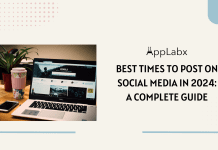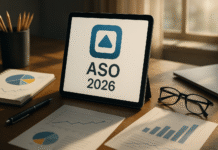Key Takeaways
- Mobile-first and multilingual SEO strategies are essential for reaching Afghanistan’s growing online audience in 2025.
- Local SEO and Google Maps optimization drive visibility for Afghan businesses targeting nearby consumers.
- Data-driven SEO trends highlight rising e-commerce, voice search, and trust-focused content as growth opportunities.
The digital landscape in Afghanistan has undergone a remarkable transformation over the past decade, with 2025 marking a pivotal year for businesses, marketers, and entrepreneurs who are seeking to leverage search engine optimization (SEO) as a cornerstone of growth. As internet penetration expands, smartphone adoption increases, and local digital ecosystems evolve, the demand for reliable SEO insights in Afghanistan has never been greater. Understanding the latest SEO statistics, data, and trends is essential for businesses aiming to gain visibility, establish credibility, and compete effectively within both domestic and international markets.

Why SEO in Afghanistan Matters in 2025
Afghanistan presents a unique digital environment shaped by socio-economic conditions, technological infrastructure, and cultural preferences. While global SEO practices provide a broad framework, localized strategies tailored to Afghanistan’s audience are proving to be far more effective. With the population becoming increasingly reliant on Google search, social media platforms, and mobile-friendly websites, SEO is no longer an optional marketing tactic but a critical business necessity.
In 2025, Afghan businesses face distinct challenges such as limited digital infrastructure in certain regions, varying literacy rates, and multilingual search behavior, including searches in Pashto, Dari, and English. At the same time, these challenges create opportunities for early adopters who optimize content for local search intent and focus on accessibility. SEO professionals and businesses in Afghanistan are realizing that the right blend of technical SEO, content marketing, mobile optimization, and local SEO can deliver measurable results even in an emerging digital market.
The Role of Data and Statistics in Driving SEO Success
Data-driven decision-making is now at the heart of successful SEO strategies worldwide, and Afghanistan is no exception. Businesses that rely on insights drawn from search engine data, keyword trends, user behavior, and website analytics are better equipped to reach their target audiences. By examining the top 60 SEO statistics, businesses can understand how Afghan consumers search for products and services, which digital platforms dominate user engagement, and which industries are most competitive online.
These statistics also highlight the growth trajectory of Afghanistan’s digital economy, showing how local startups, NGOs, and enterprises are using SEO to expand their digital footprint. The ability to harness such data enables businesses to align their strategies with real-time user behavior, adjust campaigns dynamically, and improve visibility in highly competitive search environments.
Emerging SEO Trends in Afghanistan for 2025
The SEO landscape in Afghanistan is shaped by both global innovations and local market conditions. Several key trends define the current state of SEO in the country:
- Mobile-First Optimization: With the majority of internet users in Afghanistan accessing the web through mobile devices, mobile-first strategies are essential for SEO success.
- Multilingual SEO: Pashto and Dari dominate search queries, while English remains relevant in international trade and development sectors. Businesses are optimizing content for all three languages to maximize reach.
- Voice Search Growth: As affordable smartphones with voice-assistant capabilities spread, voice search is becoming a new frontier in Afghan SEO.
- Local SEO and Maps Integration: Afghan users rely heavily on local search to find services, making Google Maps optimization crucial for small businesses.
- Content Relevance and Trust: In a market where credibility is vital, businesses are focusing on authoritative, culturally relevant, and trust-driven content strategies.
What Readers Can Expect in This Report
This comprehensive report on “Top 60 SEO in Afghanistan Statistics, Data & Trends in 2025” consolidates valuable insights from digital reports, search data, and industry trends. It offers a deep dive into Afghanistan’s SEO environment, including internet adoption rates, search engine usage patterns, keyword data, and the rise of mobile and social-driven searches. Readers will also find strategic recommendations on how to navigate this fast-growing but complex market.
Whether you are a business owner in Kabul, a startup founder in Herat, an NGO seeking to increase visibility, or an international marketer targeting Afghan audiences, this report will provide the essential data and practical guidance needed to strengthen your SEO efforts in 2025.
By analyzing these statistics and trends, stakeholders can identify growth opportunities, anticipate market shifts, and build SEO strategies that not only improve rankings but also drive meaningful engagement and long-term success.
But, before we venture further, we like to share who we are and what we do.
About AppLabx
From developing a solid marketing plan to creating compelling content, optimizing for search engines, leveraging social media, and utilizing paid advertising, AppLabx offers a comprehensive suite of digital marketing services designed to drive growth and profitability for your business.
At AppLabx, we understand that no two businesses are alike. That’s why we take a personalized approach to every project, working closely with our clients to understand their unique needs and goals, and developing customized strategies to help them achieve success.
If you need a digital consultation, then send in an inquiry here.
Or, send an email to [email protected] to get started.
Top 60 SEO in Afghanistan Statistics, Data & Trends in 2025
- The total population of Afghanistan in the year 2025 is estimated to be approximately forty-three million eight hundred forty-four thousand one hundred eleven people, reflecting the latest demographic data available.
- The median age of the population in Afghanistan is as young as seventeen point three years, indicating that half of the population is younger than this age.
- The average fertility rate in Afghanistan is calculated to be approximately four point six six children per woman, which contributes to the country’s population growth rate.
- About twenty-six point seven percent of Afghanistan’s population, equivalent to roughly eleven million seven hundred four thousand six hundred thirty-eight individuals, live in urban areas as of 2025.
- The remaining seventy-three point three percent of the population, which amounts to approximately thirty-two million one hundred thirty-nine thousand four hundred seventy-three people, reside in rural areas throughout Afghanistan.
- The population density across Afghanistan is measured at sixty-seven people per square kilometer, indicating the average number of individuals living in each square kilometer of land.
- Each year, Afghanistan’s population grows by approximately two point eight one percent, which translates to an increase of about one million one hundred ninety-six thousand six hundred nineteen people annually.
- By 2025, the number of individuals using the internet in Afghanistan has reached approximately thirteen million two hundred thousand people, showing significant digital adoption.
- This figure represents an internet penetration rate of thirty point five percent, meaning nearly one-third of the entire population is connected online.
- The annual increase in internet users within Afghanistan is around seven hundred eighty-one thousand people, reflecting a growth rate of six point three percent over the previous year.
- Cellular mobile connections in Afghanistan currently total around twenty-two million three hundred thousand, indicating that more than half of the population has access to mobile telecommunication services.
- This means that approximately fifty-one point six percent of the Afghan population is connected via mobile phones, which play a critical role in internet access.
- Among these mobile connections, eighty point nine percent are broadband subscriptions, reflecting the widespread use of mobile internet services as opposed to basic cellular usage.
- In January 2025, the median download speed for mobile internet users in Afghanistan was recorded at eight point thirteen megabits per second, showcasing faster mobile internet availability.
- The median download speed for fixed broadband connections stood at three point fifty-eight megabits per second during the same period, indicating the speed for home or office wired internet services.
- The year-over-year increase in the median mobile internet speed is significant, with a boost of approximately three point thirty-two megabits per second, representing a sixty-nine percent growth compared to the previous year.
- Fixed broadband speeds also improved, though at a more modest rate, rising by zero point forty-six megabits per second or fourteen point seven percent from the prior year’s median speeds.
- In the Afghan search engine market during mid-2025, Google maintained a dominant position with its market share ranging from ninety-five percent to just over ninety-six percent of all search traffic.
- Bing captured between two point two four percent and three point one six percent of the search engine market share, making it the second most used platform after Google.
- Yandex, the Russian-based search engine, held a market share between one point three percent and one point four one percent during this period in Afghanistan.
- Yahoo!, though much less popular, accounted for between zero point two and zero point two four percent of search traffic, retaining a minimal presence in the Afghan market.
- Privacy-focused search engine DuckDuckGo made up approximately zero point one one percent of the market share, showing some traction amongst users prioritizing data privacy.
- Baidu, the Chinese search engine, had a very small engagement with only zero point zero three percent of searches originating from Afghanistan.
- Naver, a South Korean search engine, appeared occasionally on mobile platforms with a peak market share of zero point one one percent during early 2025.
- The highest monthly visits among Afghan websites in June 2025 were recorded by google.com, which attracted nearly two million one hundred ninety thousand visits, demonstrating its critical role in internet search.
- YouTube received approximately one million three hundred fifty thousand visits in the same month, confirming the platform’s strong engagement in video content consumption.
- Facebook saw a monthly traffic volume of about four hundred seven thousand eight hundred eighty visits, highlighting its position as one of the leading social media sites in Afghanistan.
- WhatsApp, primarily used for messaging, recorded five hundred twenty thousand three hundred ninety visits, indicating its widespread adoption across the country.
- Instagram gathered roughly one hundred forty-eight thousand three hundred eighty visits in June, further marking its presence among Afghan internet users.
- As of 2025, the total number of social media users in Afghanistan is approximately four million fifty thousand people, reflecting a social media penetration rate of about nine point four percent of the national population.
- Among these social media users, eighty-four point nine percent are males, while only fifteen point one percent are females, reflecting a significant gender gap in digital engagement.
- Facebook remains the largest social media platform with around four million fifty thousand registered users in Afghanistan.
- Instagram’s user base reaches approximately one million three hundred thousand people, where female users make up twenty-one point four percent and males represent seventy-eight point six percent.
- Messenger is used by about two million one hundred fifty thousand individuals, with a gender distribution of twelve point one percent females and eighty-seven point nine percent males.
- LinkedIn boasts around five hundred ninety thousand users, with an eighteen point seven percent female presence and an eighty-one point three percent male majority.
- Twitter, now known as X, has approximately three hundred thirty-six thousand active users, with females accounting for only five point four percent and males comprising ninety-four point six percent of the user base.
- In July 2025, among social media platforms in Afghanistan, Facebook commanded the largest market share, with its audience constituting between eighty point one nine percent and eighty point three two percent of social media activity.
- The second largest social media platform, Twitter (X), held a market share approaching seven percent, ranging from six point nine two to six point nine three percent.
- Instagram had a share estimated between five point six seven and five point eight percent, securing third place in the country’s social media market.
- YouTube’s share of the social media engagement in Afghanistan amounted to about three point two two percent, reflecting its role primarily as a video-sharing platform rather than a traditional social network.
- The average annual salary for SEO specialists in Afghanistan is approximately six hundred forty-three thousand eight hundred Afghanis, a figure representing the typical yearly compensation for professionals in this field.
- Entry-level or lower-paid SEO specialists earn on average around three hundred twenty-seven thousand three hundred Afghanis per year, highlighting salary disparities within the sector.
- More experienced SEO professionals can earn a significantly higher salary, with annual compensations reaching as much as nine hundred ninety-five thousand Afghanis, reflecting expertise and seniority.
- Analysis of internet traffic sources shows that Google’s platform receives about ninety-four point two percent of its traffic from desktop users, while the remaining five point eight percent originates from mobile devices, indicating a user preference for desktop search usage.
- Facebook experiences a similar trend, with ninety-three point two percent of visits coming from desktop users and six point eight percent through mobile access, reflecting desktop dominance on this platform.
- Instagram’s traffic sources show a more notable share from mobile users, with eighty-six point eight percent accessing the site via desktop and thirteen point two percent relying on mobile devices, consistent with Instagram’s mobile-friendly design.
- Afghanistan’s population increased by approximately one million one hundred ninety-six thousand six hundred nineteen people in 2025, marking a growth rate of about two point eight one percent from the previous year.
- The number of internet users grew by around seven hundred eighty-one thousand, representing a digital user growth rate of six point three percent over the year.
- Social media users increased by approximately three hundred fifty thousand in the same period, corresponding to a growth rate of nine point five percent.
- Facebook’s advertising reach expanded by three hundred fifty thousand, also representing a nine point five percent increase in market penetration.
- Instagram’s advertising audience grew significantly by around two hundred eighty-nine thousand new users, reflecting a remarkable growth rate of twenty-eight point six percent.
- LinkedIn saw its ad reach increase by approximately eighty thousand users, corresponding to a fifteen point seven percent growth rate.
- Messenger’s audience expanded by one hundred thousand users, marking a growth rate of four point nine percent in ad reach.
- Twitter or X gained approximately twenty-five thousand nine hundred new users, which equates to an eight point three percent increase in its advertising reach.
- The internet adoption rate in Afghanistan improved by roughly three point three percent year over year, equating to a ninety-eight basis point increase, underscoring the country’s steady progress in digital inclusion.
- Mobile broadband connections represent a dominant eighty point nine percent share of all mobile subscriptions, highlighting mobile internet’s critical role in connectivity.
- Monthly visits to the twenty most popular websites in Afghanistan totaled approximately seven million five hundred seventy-eight thousand four hundred seventy during June 2025, demonstrating robust online activity.
- The median age of the population considered digital in Afghanistan is seventeen point three years old, making it one of the youngest digital audiences globally viable for targeted SEO strategies.
- Urban internet penetration is estimated to exceed fifty percent, reflecting higher connectivity rates in cities and towns compared to rural areas.
- Despite growing digital adoption, Afghan SEO specialists earn annual salaries well below the global average, which typically exceeds ten thousand U.S. dollars, pointing to economic disparities in the digital labor market.
Conclusion
The digital transformation of Afghanistan is unfolding at an accelerated pace, and 2025 marks a defining period for how businesses, organizations, and marketers adapt to this new era of search-driven growth. The top 60 SEO statistics, data, and trends in Afghanistan highlight not only the immense opportunities but also the unique challenges faced by the local digital economy. From mobile-first browsing and multilingual search behaviors to the rising significance of voice search and local SEO, it is evident that Afghanistan’s online market is evolving in a direction that demands agility, cultural sensitivity, and strategic foresight.
Key Takeaways from Afghanistan’s SEO Landscape
Several critical insights stand out from the analysis of Afghanistan’s SEO ecosystem in 2025:
- Mobile Dominance: With the majority of users accessing the internet via smartphones, optimizing for mobile-friendly designs and faster load speeds remains non-negotiable.
- Multilingual Content Strategy: Effective SEO in Afghanistan requires tailoring strategies across Pashto, Dari, and English to meet diverse user needs and search patterns.
- Local SEO Importance: Afghan consumers rely heavily on Google Maps and location-based searches to discover nearby services, making local SEO an indispensable tool for visibility.
- Growing E-commerce and Digital Services: As online marketplaces expand, SEO plays a pivotal role in driving traffic, building brand trust, and creating digital-first revenue streams.
- Content Authority and Trust: In an environment where credibility is vital, businesses that prioritize high-quality, culturally relevant, and trustworthy content will establish long-term success.
Why These SEO Trends Matter for Businesses
For Afghan businesses and international organizations alike, the statistics presented in this report reinforce one message: SEO is no longer optional but a core driver of digital competitiveness. Those who invest in well-structured, data-driven SEO strategies will enjoy sustainable advantages, including higher visibility, stronger brand recognition, and increased engagement with both local and global audiences.
By aligning strategies with the evolving search behaviors of Afghan users—whether that involves embracing mobile-first indexing, creating multilingual content, or leveraging voice and AI-driven search tools—companies can ensure that their digital presence remains relevant in a competitive online environment.
Looking Ahead: SEO in Afghanistan Beyond 2025
While 2025 sets the stage for major growth in Afghanistan’s SEO ecosystem, the future promises even greater transformation. As internet access becomes more widespread, digital literacy improves, and new technologies such as artificial intelligence and machine learning become more integrated into search engines, Afghanistan’s businesses will face both unprecedented opportunities and new challenges.
For forward-thinking entrepreneurs, NGOs, and enterprises, the coming years will require continued adaptation, innovation, and investment in SEO best practices. Those who adopt proactive strategies today will be better positioned to navigate the rapid changes in the digital economy tomorrow.
Final Thoughts
The “Top 60 SEO in Afghanistan Statistics, Data & Trends in 2025” provides a detailed roadmap for anyone seeking to understand and succeed in Afghanistan’s digital market. By combining global SEO best practices with localized strategies that respect the linguistic, cultural, and technological realities of Afghanistan, businesses can unlock significant growth potential.
In conclusion, Afghanistan’s SEO landscape in 2025 represents more than just numbers and trends—it embodies the country’s transition toward a more connected, digitally empowered future. Organizations that recognize this shift and align their strategies accordingly will not only secure stronger rankings on search engines but will also contribute to shaping the broader digital economy of Afghanistan in years to come.
If you are looking for a top-class digital marketer, then book a free consultation slot here.
If you find this article useful, why not share it with your friends and business partners, and also leave a nice comment below?
We, at the AppLabx Research Team, strive to bring the latest and most meaningful data, guides, and statistics to your doorstep.
To get access to top-quality guides, click over to the AppLabx Blog.
People also ask
What is the current state of SEO in Afghanistan in 2025?
SEO in Afghanistan is rapidly growing, with businesses focusing on mobile-first design, local SEO, and multilingual strategies to reach broader audiences.
Why is SEO important for businesses in Afghanistan in 2025?
SEO helps Afghan businesses gain visibility on search engines, attract targeted traffic, and build trust with local and international audiences.
Which languages dominate SEO in Afghanistan?
Pashto, Dari, and English are the main languages in Afghan SEO, with businesses optimizing across all three for maximum reach.
How has internet usage impacted SEO in Afghanistan?
Rising internet penetration and mobile adoption have significantly increased the importance of SEO for Afghan businesses in 2025.
What role does mobile SEO play in Afghanistan?
Most users access the web via smartphones, making mobile-first optimization essential for rankings and user engagement.
Is local SEO important in Afghanistan?
Yes, Afghan consumers rely heavily on Google Maps and local searches, making local SEO a powerful tool for small businesses.
What are the top SEO trends in Afghanistan in 2025?
Key trends include mobile-first indexing, voice search growth, local SEO, and content strategies that focus on trust and authority.
How competitive is SEO in Afghanistan?
SEO competition is growing, particularly in e-commerce, education, NGOs, and services, as more businesses invest in digital strategies.
What industries benefit most from SEO in Afghanistan?
E-commerce, hospitality, education, NGOs, and small businesses see the greatest benefits from SEO-driven visibility.
Does voice search affect SEO in Afghanistan?
Yes, with affordable smartphones and voice assistants, voice search is influencing keyword strategies and user intent optimization.
Which search engine is most used in Afghanistan?
Google dominates search usage in Afghanistan, making it the primary platform for SEO strategies.
What is the role of e-commerce SEO in Afghanistan?
E-commerce businesses rely on SEO to drive traffic, boost online sales, and compete in an emerging digital marketplace.
How does content marketing connect with SEO in Afghanistan?
Content that is culturally relevant, multilingual, and trustworthy drives engagement and improves rankings in Afghan SEO.
Are Afghan businesses using AI in SEO in 2025?
AI tools for keyword research, content creation, and analytics are increasingly being adopted by Afghan businesses.
What challenges do Afghan businesses face with SEO?
Challenges include limited digital infrastructure, multilingual optimization, and building credibility in online markets.
How does SEO help NGOs in Afghanistan?
SEO helps NGOs reach wider audiences, increase visibility for campaigns, and connect with international donors and partners.
What is the impact of social media on SEO in Afghanistan?
Social platforms drive traffic, brand awareness, and engagement, supporting SEO efforts through complementary visibility.
Is multilingual SEO necessary in Afghanistan?
Yes, targeting Pashto, Dari, and English is essential to reach Afghanistan’s diverse online audience effectively.
How does mobile internet shape SEO strategies in Afghanistan?
Since most users browse on smartphones, mobile-optimized websites are prioritized by Google and preferred by Afghan users.
What are the future SEO opportunities in Afghanistan?
Opportunities include expanding e-commerce SEO, voice search, AI-driven tools, and localized marketing strategies.
How does trust affect SEO in Afghanistan?
Trustworthy, high-quality content ranks better, builds credibility, and drives long-term customer relationships in Afghanistan.
Do Afghan startups invest in SEO?
Yes, startups are increasingly using SEO as a cost-effective way to build brand visibility and compete with established firms.
What role does technical SEO play in Afghanistan?
Technical SEO, including site speed, indexing, and security, is crucial for improving rankings and user experience.
How fast is SEO adoption growing in Afghanistan?
SEO adoption is steadily increasing as more Afghan businesses realize its importance in driving digital growth.
Does keyword research differ in Afghanistan?
Yes, keyword research must account for multilingual searches, regional dialects, and local user behavior.
What is the importance of backlinks in Afghan SEO?
Backlinks remain vital for building authority, credibility, and improving rankings in Afghanistan’s competitive SEO space.
Are Afghan businesses optimizing for Google Maps?
Yes, local SEO and Google Maps optimization are critical for attracting nearby customers and boosting visibility.
What is the role of analytics in Afghanistan’s SEO strategies?
Analytics tools help businesses track user behavior, refine strategies, and measure SEO performance.
How can international companies target Afghan audiences with SEO?
By using localized content, multilingual optimization, and region-specific keywords, global companies can connect effectively.
What is the long-term outlook for SEO in Afghanistan?
SEO in Afghanistan is poised for strong growth, with businesses embracing digital strategies as internet use continues to expand.
Sources
- DataReportal – Digital 2025: Afghanistan
- Statcounter Global Stats – Search Engine Market Share Afghanistan
- Semrush – Trending Websites in Afghanistan 2025
- Worldometer – Afghanistan Population (2025)
- CEIC Data – Afghanistan Internet Usage and Search Engine Market Share
- Statcounter Global Stats – Social Media Stats Afghanistan
- Worldsalaries.com – Average SEO Specialist Salary in Afghanistan
- NapoleonCat – Social Media Users in Afghanistan
- Industry and Market SEO Reports (various digital marketing and SEO analytics sources)
- Google Ads and Google My Business Usage Data (regional digital marketing surveys)
- Afghan Government and NGO Digital Infrastructure Reports
- Afghan Telecommunications and Internet Service Providers’ Public Data
- Afghan E-Commerce and Retail Sector Market Research
- Local Language Search Query Analytics and Digital Consumer Behavior Studies
- Afghan Travel and Tourism Digital Marketing Performance Reports
- Academic and University Website SEO and Digital Content Reports


































